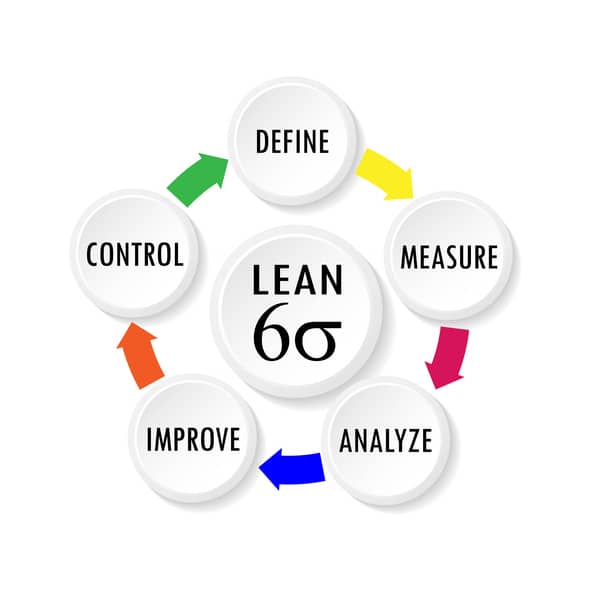Businesses face a key point as they move into a new year. The availability of advanced software systems has made the collection and analysis of data easier than ever. Questions now center on how to best leverage that data – or even what to analyze in the first place.
Lean Six Sigma offers help in these areas. Merging continuous process improvement with the power of advanced data analytics offers organizations a chance to improve operations, whether it’s a retailer looking to optimize a digital marketing campaign or a manufacturer that wants higher yield rates and better quality on the shop floor.
The key to success is having the right people in place who have been trained on the details of Lean Six Sigma methodologies as well as how to apply them.
The Importance of Data Analytics
In an article on the importance of data analytics, Forbes reported on recent surveys that found data analytics and business intelligence are a priority for most organizations. Among the findings:
- 46% of manufacturers said data analytics are necessary to stay competitive and grow
- 69% of manufacturing decision-makers said analytics are crucial for success in 2020
- 32% of manufacturers said analytics can improve supply chain performance and increase revenue
Organizations are using data analytics to automate everything from manufacturing processes to handling the paperwork needed to comply with government regulations or audits. Ideas gleaned from data also have helped companies innovate production operations, inventory management, fleet management and customer service.
How Six Sigma Can Support Data Analytics
Forbes also wrote about the core metrics businesses use to determine how analytics are impacting areas such as manufacturing operations, finance, accounting, supply chain management, procurement and service.
Among them is manufacturing cycle time, which is similar to Takt Time. Takt Time in Six Sigma measures the time between the start of production on one unit and the start of production on the next unit. In this area, Forbes reports that businesses are “applying Six Sigma to know process bottlenecks.”
Another core metric is ensuring the quality of what is delivered by suppliers. Forbes reported that “nearly all manufacturers are relying on Six Sigma programs to troubleshoot specific trouble spots and problem areas of suppliers who may have wide variations in product quality in a given period.”
Ways To Start Using Lean Six Sigma and Data Analytics
The vast amounts of data a company collects can enhance Lean Six Sigma tools and techniques by allowing them to work faster. The ability to quickly analyze large data sets also improves the accuracy of outcomes.
That said, the tools and techniques of Lean Six Sigma remain the same. Here are two that can help make use of data analytics.
DMAIC – This cornerstone of Six Sigma stands for Define, Measure, Analyze, Improve and Control. The end goal is to reduce errors, meet schedule deadlines and improve quality. Another core metric mentioned by Forbes, called Perfect Order Performance, measures how often a company produces a product that meets customer expectations and is delivered on time.
Value Stream Mapping – This Lean tool involves visually mapping out a process in detail, something data analytics can help enormously. Once a detailed picture of how a process works is created, it’s then possible to determine where errors are being made and what steps do not add value to the final product.
Creating a Culture of Continuous Improvement
To successfully merge Lean Six Sigma with data analytics, it’s important to create a culture of continuous process improvement. That involves several important steps, starting with a statement of why you need process improvement and what you hope to achieve.
It’s also important to train people in Lean and Six Sigma principles. The ability to learn what is needed to earn belts that range from White (beginner) to Master Black (expert) are offered through training and certification courses.
The importance of this “people side of Six Sigma” cannot be overstated. Without proper training and buy-in from both employees and executives, Six Sigma projects have far less chance of succeeding. It also becomes much harder to foster an environment of continuous process improvement.
Data analytics can enhance Lean Six Sigma tools. Lean Six Sigma can identify areas where data analytics need to be applied. Working together, the two can make organizations more competitive, effective and efficient.



